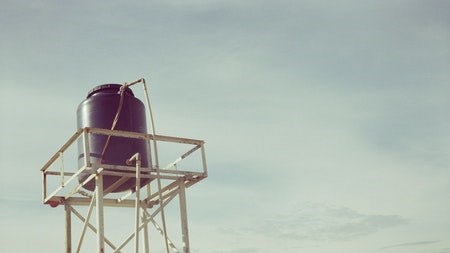With all rainwater collection systems, there are certain tasks you should regularly undertake to prolong the system’s lifespan, reduce the potential for damage, and ensure you enjoy maximum benefits.
Tanks
Water storage tanks are fairly low-maintenance installations, but you regularly need to clear and clean all strainers and filters.
You need to regularly check the pre-filtration devices to ensure that they are free from leaves and other debris that could restrict rainwater flow.
If you’ve installed a first flush diverter, check and clean it out at least once a month - or more often if you live in a windy area. Ensure that the diverter is dripping out sufficiently to reset the system.
Inspect the inside of the tank every three months to make sure leaf debris has not built up on the tank’s bottom. A properly designed system should prevent leaves and other materials from entering the tank.
Changing worn-out tap washers on water tanks is tricky because you can’t shut off the water while doing the job. For this reason, JoJo (www.jojo.co.za) recommends installing ball valves on tanks instead of standard taps with jumper valves.
If the tank is near-empty, it’s a good idea to change tap washers then – even if they aren’t leaking. This is the ideal time to flush out any sludge accumulated on the bottom of the tank.
However, tanks may not be empty for years on end. If you have to change a leaking washer with a full tank, you can do it with the water running because the pressure isn’t usually very high. Although this will waste some water, the worn washer was causing waste anyway.
Rooftops
Rooftops should be cleaned regularly to avoid contaminating the runoff. Dust, leaves, animal excrement and dead insects accumulate on the roof during dry weather. Therefore, you need to ensure the roof is cleaned before the rainy season starts.
Once the roof is clean, you need to do monthly checks to ensure it stays that way. Also, make sure that branches overhanging the roof are regularly trimmed back.
Gutters
You will also need to regularly check gutters – particularly after windy days - to make sure they are clean and clear. If not, the tank water will be tainted, and you may waste rainwater if gutters block up and overflow.
Ensure that gutters are free from leaves and other debris. Consider installing gutter mesh at the top of downpipes.
Water quality
Remember that water collected from your roof is ideal for irrigation but will not be clean enough to drink. If you intend to use it for drinking purposes, consult an installer with experience installing water filtration systems.
If well adhered to, the guidelines provided above will assist you in cost-effectively and adequately maintaining your water tank.




